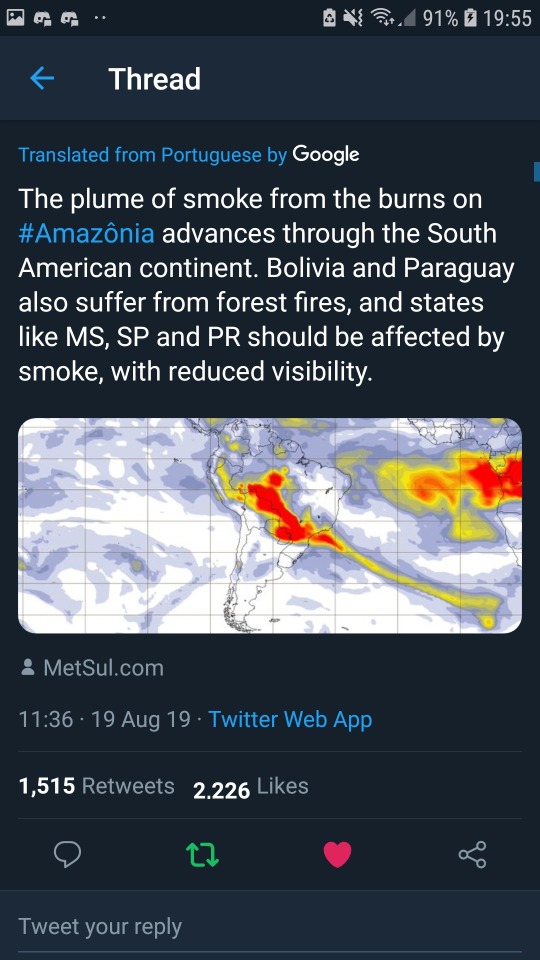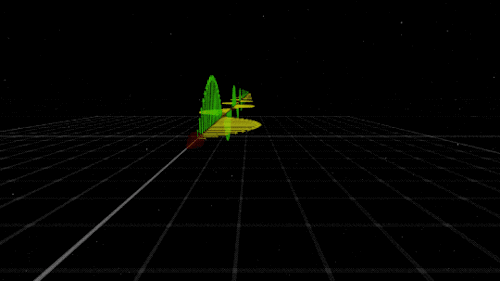Thehkr - 無標題
More Posts from Thehkr and Others

Build a Rover, Race a Rover!

Have you ever wanted to drive a rover across the surface of the Moon?
This weekend, students from around the world will get their chance to live out the experience on Earth! At the Human Exploration Rover Challenge, managed by NASA’s Marshall Space Flight Center in Huntsville, Alabama, high schoolers and college students operate human-powered rovers that they designed and built as they traverse a simulated world, making decisions and facing obstacles that replicate what the next generation of explorers will face in space.

Though the teams that build the rover can be a few people or a few dozen, in the end, two students (one male, one female) will end up navigating their rover through a custom-built course at the U.S. Space and Rocket Center. Each duo will push their rover to the limit, climbing up hills, bumping over rocky and gravelly grounds, and completing mission objectives (like retrieving soil samples and planting their team flag) for extra points – all in less than seven minutes.

2019 will mark the 25th year of Rover Challenge, which started life as the Great Moonbuggy Race on July 16, 1994. Six teams braved the rain and terrain (without a time limit) in the Rocket City that first year – and in the end, the University of New Hampshire emerged victorious, powering through the moon craters, boulder fields and other obstacles in eighteen minutes and fifty-five seconds.

When it came time to present that year’s design awards, though, the honors went to the University of Puerto Rico at Humacao, who have since become the only school to compete in every Great Moonbuggy Race and Rover Challenge hosted by NASA Marshall. The second-place finishers in 1994, the hometown University of Alabama in Huntsville, are the only other school to compete in both the first race and the 25th anniversary race in 2019.

Since that first expedition, the competition has only grown: the race was officially renamed the Human Exploration Rover Challenge for 2014, requiring teams to build even more of their rover from the wheels up, and last year, new challenges and tasks were added to better reflect the experience of completing a NASA mission on another planet. This year, almost 100 teams will be competing in Rover Challenge, hailing from 24 states, Washington, D.C., Puerto Rico, and countries from Bolivia to Bangladesh.

Rover Challenge honors the legacy of the NASA Lunar Roving Vehicle, which made its first excursion on the moon in 1971, driven by astronauts David Scott and James Irwin on Apollo 15. Given the competition’s space race inspiration, it’s only appropriate that the 25th year of Rover Challenge is happening in 2019, the 50th anniversary of Neil Armstrong and Buzz Aldrin’s historic Apollo 11 moon landing.

Interested in learning more about Rover Challenge? Get the details on the NASA Rover Challenge site – then join us at the U.S. Space and Rocket Center (entrance is free) or watch live on the Rover Challenge Facebook Page starting at 7 AM CT, this Friday, April 12 and Saturday, April 13. Happy roving!
Make sure to follow us on Tumblr for your regular dose of space: http://nasa.tumblr.com


Every next level of your life will demand a different you.
Leonardo DiCaprio (via quotemadness)

Guy Bluford Changed the Course of Space History
On Aug. 30, 1983, Guion Bluford, better known as Guy, became the first African American to fly to space. An accomplished jet pilot and aerospace engineer, Bluford became part of NASA’s 1978 astronaut class that included the first African American, the first Asian American, and the first women astronauts.
He and the other crew members of mission STS-8 were aboard the orbiter Challenger as it lifted off from Kennedy Space Center in Florida; it was the first nighttime launch and landing of the Space Shuttle program. While aboard, he and the other crew members deployed the Indian National Satellite (INSAT-1B), operated a Canadian-built robot arm, conducted experiments with live cell samples, and participated in studies measuring the effects of spaceflight on humans.
Guy Bluford chased his childhood dream of becoming an aerospace engineer, and in doing so, changed history and encouraged other Black astronauts to follow in his footsteps.
Make sure to follow us on Tumblr for your regular dose of space—and for milestones like this!




秋山莉奈
This is São Paulo at 3 PM today

No, this is not just a dark storm cloud
It's smoke


Just this year the deforestation rate of the Amazon rainforest rose more than 60%. This is a direct consequence of Jair Bolsonaro's government, treating the forest as an area of exploitation and not preservation, attempting to cease the rights of our indigenous population and straight up lying and censoring data
Our forest is dying and nobody cares
May the Four Forces Be With You!
May the force be with you? Much to learn you still have, padawan. In our universe it would be more appropriate to say, “May the four forces be with you.”

There are four fundamental forces that bind our universe and its building blocks together. Two of them are easy to spot — gravity keeps your feet on the ground while electromagnetism keeps your devices running. The other two are a little harder to see directly in everyday life, but without them, our universe would look a lot different!
Let’s explore these forces in a little more detail.
Gravity: Bringing the universe together

If you jump up, gravity brings you back down to Earth. It also keeps the solar system together … and our galaxy, and our local group of galaxies and our supercluster of galaxies.
Gravity pulls everything together. Everything, from the bright centers of the universe to the planets farthest from them. In fact, you (yes, you!) even exert a gravitational force on a galaxy far, far away. A tiny gravitational force, but a force nonetheless.

Credit: NASA and the Advanced Visualization Laboratory at the National Center for Supercomputing and B. O'Shea, M. Norman
Despite its well-known reputation, gravity is actually the weakest of the four forces. Its strength increases with the mass of the two objects involved. And its range is infinite, but the strength drops off as the square of the distance. If you and a friend measured your gravitational tug on each other and then doubled the distance between you, your new gravitational attraction would just be a quarter of what it was. So, you have to be really close together, or really big, or both, to exert a lot of gravity.
Even so, because its range is infinite, gravity is responsible for the formation of the largest structures in our universe! Planetary systems, galaxies and clusters of galaxies all formed because gravity brought them together.
Gravity truly surrounds us and binds us together.
Electromagnetism: Lighting the way

You know that shock you get on a dry day after shuffling across the carpet? The electricity that powers your television? The light that illuminates your room on a dark night? Those are all the work of electromagnetism. As the name implies, electromagnetism is the force that includes both electricity and magnetism.
Electromagnetism keeps electrons orbiting the nucleus at the center of atoms and allows chemical compounds to form (you know, the stuff that makes up us and everything around us). Electromagnetic waves are also known as light. Once started, an electromagnetic wave will travel at the speed of light until it interacts with something (like your eye) — so it will be there to light up the dark places.

Like gravity, electromagnetism works at infinite distances. And, also like gravity, the electromagnetic force between two objects falls as the square of their distance. However, unlike gravity, electromagnetism doesn’t just attract. Whether it attracts or repels depends on the electric charge of the objects involved. Two negative charges or two positive charges repel each other; one of each, and they attract each other. Plus. Minus. A balance.
This is what happens with common household magnets. If you hold them with the same “poles” together, they resist each other. On the other hand, if you hold a magnet with opposite poles together — snap! — they’ll attract each other.
Electromagnetism might just explain the relationship between a certain scruffy-looking nerf-herder and a princess.
Strong Force: Building the building blocks

Credit: Lawrence Livermore National Laboratory
The strong force is where things get really small. So small, that you can’t see it at work directly. But don’t let your eyes deceive you. Despite acting only on short distances, the strong force holds together the building blocks of the atoms, which are, in turn, the building blocks of everything we see around us.
Like gravity, the strong force always attracts, but that’s really where their similarities end. As the name implies, the force is strong with the strong force. It is the strongest of the four forces. It brings together protons and neutrons to form the nucleus of atoms — it has to be stronger than electromagnetism to do it, since all those protons are positively charged. But not only that, the strong force holds together the quarks — even tinier particles — to form those very protons and neutrons.
However, the strong force only works on very, very, very small distances. How small? About the scale of a medium-sized atom’s nucleus. For those of you who like the numbers, that’s about 10-15 meters, or 0.000000000000001 meters. That’s about a hundred billion times smaller than the width of a human hair! Whew.
Its tiny scale is why you don’t directly see the strong force in your day-to-day life. Judge a force by its physical size, do you?
Weak Force: Keeping us in sunshine

If you thought it was hard to see the strong force, the weak force works on even smaller scales — 1,000 times smaller. But it, too, is extremely important for life as we know it. In fact, the weak force plays a key role in keeping our Sun shining.
But what does the weak force do? Well … that requires getting a little into the weeds of particle physics. Here goes nothing! We mentioned quarks earlier — these are tiny particles that, among other things, make up protons and neutrons. There are six types of quarks, but the two that make up protons and neutrons are called up and down quarks. The weak force changes one quark type into another. This causes neutrons to decay into protons (or the other way around) while releasing electrons and ghostly particles called neutrinos.
So for example, the weak force can turn a down quark in a neutron into an up quark, which will turn that neutron into a proton. If that neutron is in an atom’s nucleus, the electric charge of the nucleus changes. That tiny change turns the atom into a different element! Such reactions are happening all the time in our Sun, giving it the energy to shine.
The weak force might just help to keep you in the (sun)light.

All four of these forces run strong in the universe. They flow between all things and keep our universe in balance. Without them, we’d be doomed. But these forces will be with you. Always.
You can learn more about gravity from NASA’s Space Place and follow NASAUniverse on Twitter or Facebook to learn about some of the cool cosmic objects we study with light.
Make sure to follow us on Tumblr for your regular dose of space: http://nasa.tumblr.com

-
 barrbossa7 liked this · 10 months ago
barrbossa7 liked this · 10 months ago -
 poartinspo3 reblogged this · 1 year ago
poartinspo3 reblogged this · 1 year ago -
 northwestphotag1 liked this · 1 year ago
northwestphotag1 liked this · 1 year ago -
 sadfighter liked this · 1 year ago
sadfighter liked this · 1 year ago -
 zombiesnipes99 liked this · 1 year ago
zombiesnipes99 liked this · 1 year ago -
 naysman liked this · 1 year ago
naysman liked this · 1 year ago -
 saman7 liked this · 2 years ago
saman7 liked this · 2 years ago -
 dopetyrantgoatee liked this · 2 years ago
dopetyrantgoatee liked this · 2 years ago -
 789sam liked this · 2 years ago
789sam liked this · 2 years ago -
 mowrow11 liked this · 2 years ago
mowrow11 liked this · 2 years ago -
 bmwm550i liked this · 2 years ago
bmwm550i liked this · 2 years ago -
 juke1241-blog liked this · 2 years ago
juke1241-blog liked this · 2 years ago -
 630twins liked this · 2 years ago
630twins liked this · 2 years ago -
 moonstarzzz liked this · 2 years ago
moonstarzzz liked this · 2 years ago -
 iiikonwwwnn liked this · 3 years ago
iiikonwwwnn liked this · 3 years ago -
 gyoungju-m reblogged this · 3 years ago
gyoungju-m reblogged this · 3 years ago -
 gyoungju-m liked this · 3 years ago
gyoungju-m liked this · 3 years ago -
 marelodvcn liked this · 3 years ago
marelodvcn liked this · 3 years ago -
 nfjfight liked this · 3 years ago
nfjfight liked this · 3 years ago -
 len765-blog liked this · 3 years ago
len765-blog liked this · 3 years ago -
 dlfdk-blog liked this · 3 years ago
dlfdk-blog liked this · 3 years ago -
 1623595801 liked this · 3 years ago
1623595801 liked this · 3 years ago -
 enfrjadu-blog liked this · 3 years ago
enfrjadu-blog liked this · 3 years ago -
 brutale1000mvagusta liked this · 3 years ago
brutale1000mvagusta liked this · 3 years ago -
 syangiii liked this · 3 years ago
syangiii liked this · 3 years ago -
 hsu311 liked this · 3 years ago
hsu311 liked this · 3 years ago -
 magnumlitany liked this · 3 years ago
magnumlitany liked this · 3 years ago -
 14151813114 liked this · 3 years ago
14151813114 liked this · 3 years ago -
 lovelyfriedbouquet liked this · 3 years ago
lovelyfriedbouquet liked this · 3 years ago -
 de17 liked this · 3 years ago
de17 liked this · 3 years ago -
 garrettomc liked this · 3 years ago
garrettomc liked this · 3 years ago -
 hiromnbull liked this · 3 years ago
hiromnbull liked this · 3 years ago -
 yyuu-je liked this · 3 years ago
yyuu-je liked this · 3 years ago -
 mantis842 liked this · 3 years ago
mantis842 liked this · 3 years ago -
 psa24z liked this · 3 years ago
psa24z liked this · 3 years ago